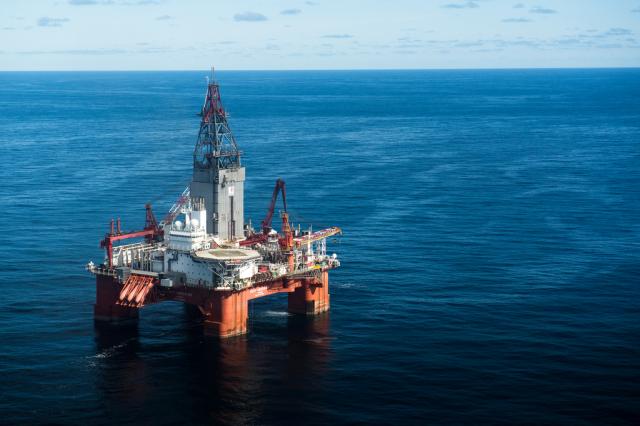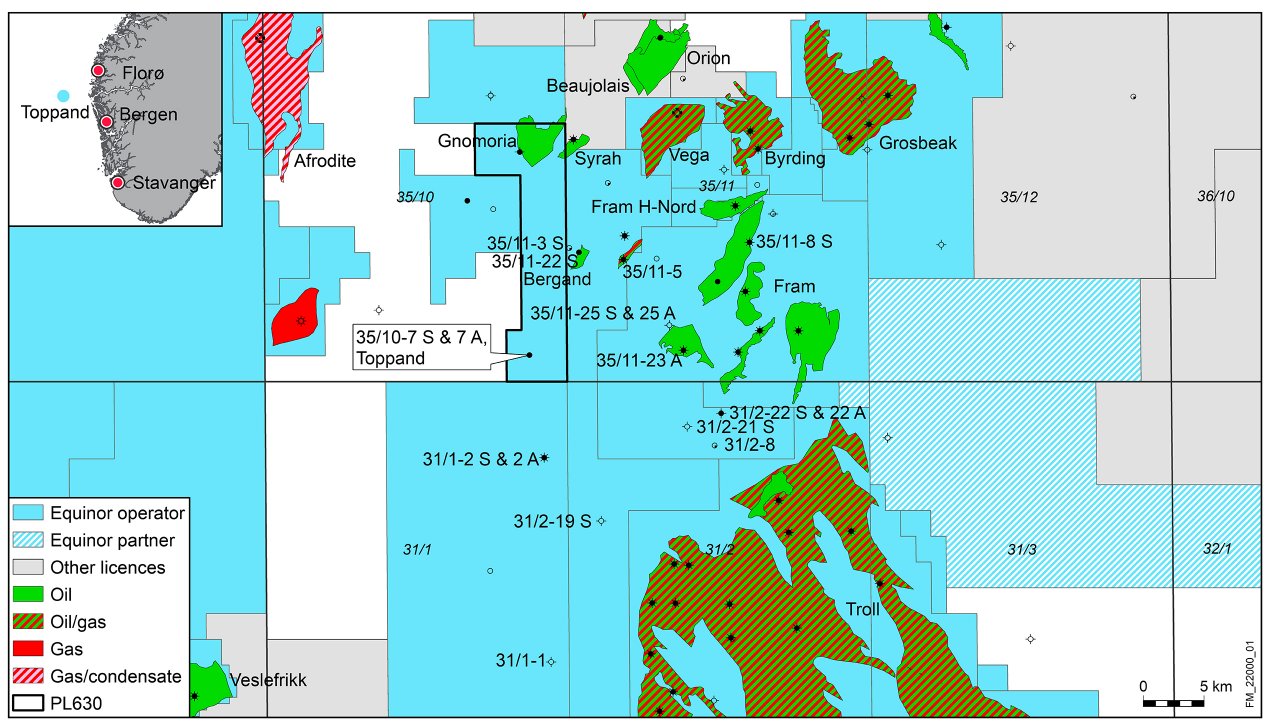
Preliminary calculations of the oil discovery's expected size indicate between 3.3 and 5.2 million standard cubic meters of recoverable oil equivalent. (Source: Ole Jørgen Bratland/Equinor)
Norwegian oil and gas company Equinor has made a new oil discovery, located near the Fram field in the North Sea offshore Norway, and will consider tying it to one of Troll field platforms, the energy major said on Jan. 7.
Equinor and its partner Wellesley found oil in the Troll and Fram area in exploration wells 35/10-7 S and 35/10-7 A in the Toppand prospect. Preliminary calculations of the expected size indicate between 3.3 and 5.2 million standard cubic meters of recoverable oil equivalent, or around 21 to 33 million barrels of recoverable oil equivalent.
Both wells were drilled around 8 km west of the Fram field and 140 km northwest of Bergen.

Well 35/10-7 S encountered an oil column of around 75 m in the lower part of the Ness formation and in the Etive formation. There were also traces of hydrocarbons in the shale and coal dominated upper part of the Brent Group. A total of around 68 me of effective sandstone reservoir of good to very good reservoir quality was encountered in the Ness and Etive formations combined.
The Oseberg formation was around 48 m thick and filled with water. It mainly consisted of sandstone of moderate reservoir quality. The oil/water contact was not proven in the well, but by aid of pressure data it is estimated to be located at around 3303 m. Sandstone of moderate to poor reservoir quality was encountered in the Cook formation, but the reservoir was filled with water.
Exploration well 35/10-7 A encountered a 60-m oil-filled sandstone-dominated interval in the lower part of the Ness formation and in the Etive formation. A total of around 67 m of effective sandstone reservoir of good to moderate quality were encountered in the Ness and Etive formations combined.
The Oseberg formation was around 48 m thick and mainly consisted of oil-filled sandstone of moderate reservoir quality. An oil/water contact was proven at around 3290 m, accounting for a 30 m oil column.
Well 35/10-7 S was drilled to a vertical depth of 3509 m below sea level and a measured depth of 3563 m below sea level and was completed in the Dunlin Group of early Jurassic rock. Well 30/10-7 A was drilled to a vertical depth of 3370 m below sea level and a measured depth of 3574 me below sea level and was completed in the upper part of the Dunlin Group.
Water depth in the area is 354 m. The wells have been permanently plugged and abandoned. The wells were drilled by the West Hercules drilling rig, which has moved to drill exploration well 6407/9-13 in production license 1060 in the Norwegian Sea.
Ownership interests in Toppand is 50% Equinor and 50% Wellesley.
“Our exploration activity is central for our ambitions at the Norwegian continental shelf," noted Geir Sørtveit, senior vice president for exploration & production west operations.
"We are pleased to see that our success in the Troll- and Fram area continues. We also regard this discovery to be commercially viable and will consider tying it to the Troll B or Troll C platform. Such discoveries close to existing infrastructure are characterized by high profitability, a short payback period and low CO2 emissions."
Equinor also noted in a press release that several discoveries in the Troll and Fram area during the past few years demonstrate that even mature areas can be revitalized based on new information and modern exploration technology. Toppand is the fifth discovery in the area, and proven resources might exceed 300 million barrels of oil equivalent.
These wells are the second and third exploration well in production licence 630. The licence was awarded in the 2011 Award in Predefined Areas.
Recommended Reading
PHX Minerals’ Borrowing Base Reaffirmed
2024-04-19 - PHX Minerals said the company’s credit facility was extended through Sept. 1, 2028.
SLB’s ChampionX Acquisition Key to Production Recovery Market
2024-04-19 - During a quarterly earnings call, SLB CEO Olivier Le Peuch highlighted the production recovery market as a key part of the company’s growth strategy.
BP Restructures, Reduces Executive Team to 10
2024-04-18 - BP said the organizational changes will reduce duplication and reporting line complexity.
Matador Resources Announces Quarterly Cash Dividend
2024-04-18 - Matador Resources’ dividend is payable on June 7 to shareholders of record by May 17.
EQT Declares Quarterly Dividend
2024-04-18 - EQT Corp.’s dividend is payable June 1 to shareholders of record by May 8.





